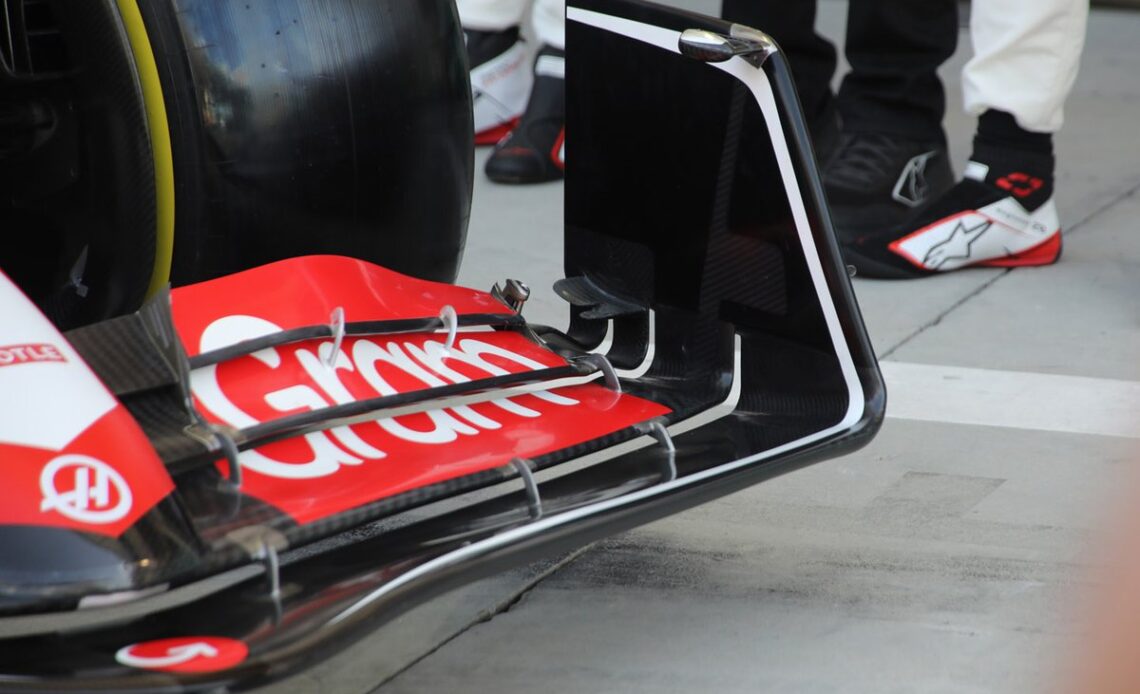Haas is one of three teams, including Red Bull and Mercedes, to have mounted a winglet on the inboard rear quarter of the front wing endplate.
Haas VF-23 front wing detail
Photo by: Giorgio Piola
In this case, the Haas winglet also has a slot to marry-up with the slots below it between the front wing elements.
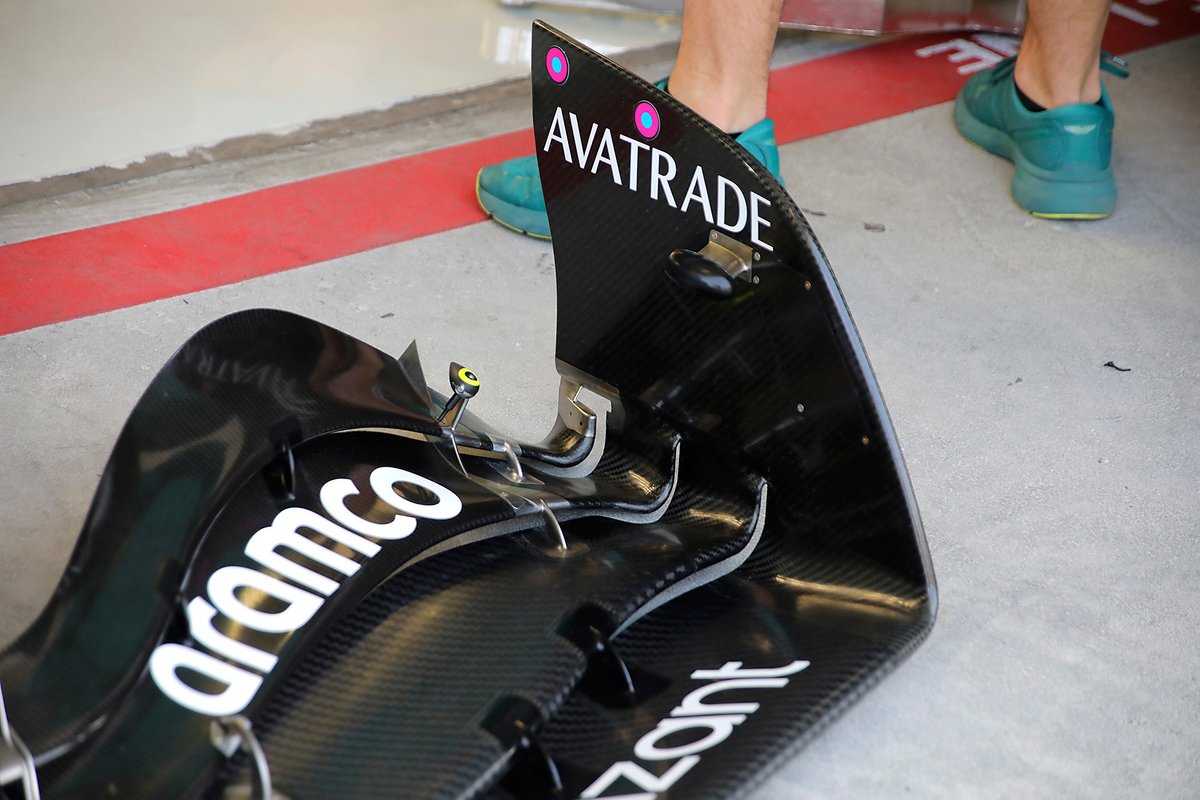
Aston Martin AMR 23, detail front wing
Photo by: Giorgio Piola
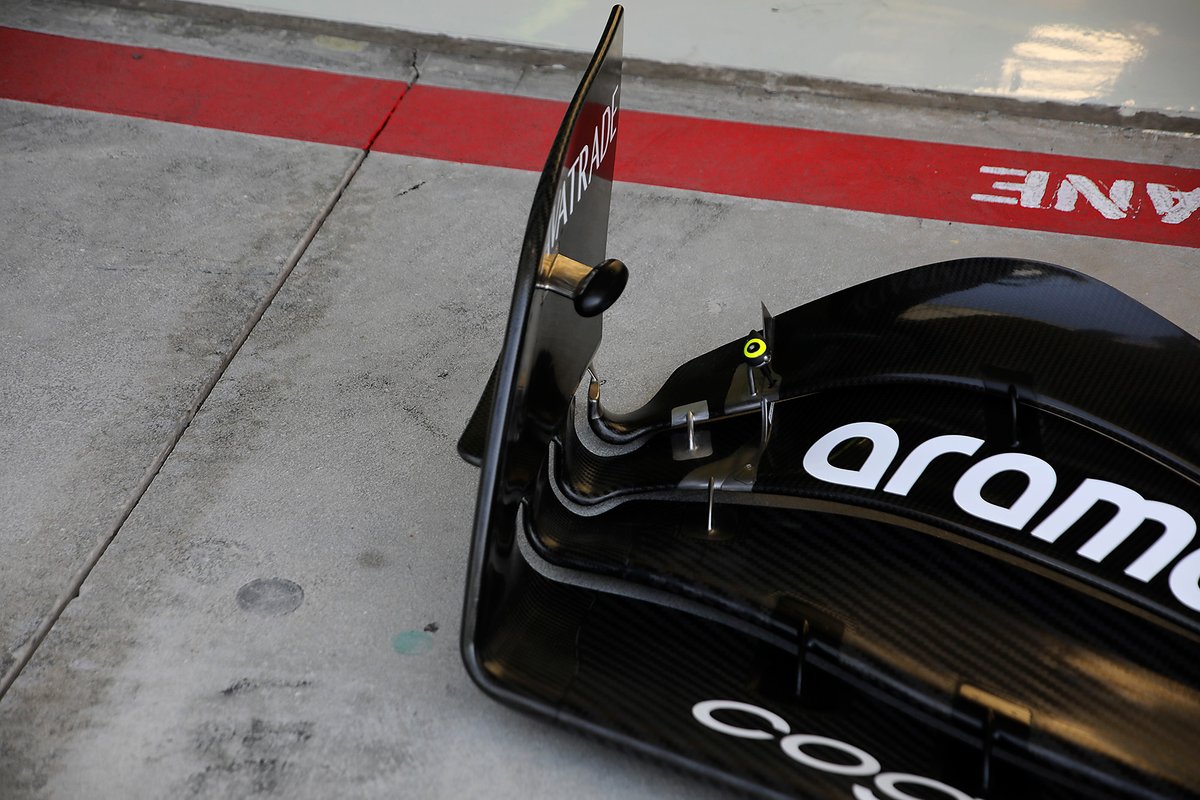
Aston Martin AMR 23, detail front wing
Photo by: Giorgio Piola
Sticking with the rear corner of the front wing endplate, on the Aston Martin AMR23 the rearmost flap isn’t fully attached and a small notch has also been taken out of the element ahead.
Aston is clearly looking to help improve the outwash that is generated by the rear section of the endplate and wing elements here, in much the same way Mercedes has with its design, both this and last year.
To help maintain rigidity this section, the Aston also has metal inserts, rather than just being made up from carbon fibre, as the rear element sits away from the main body of the endplate.
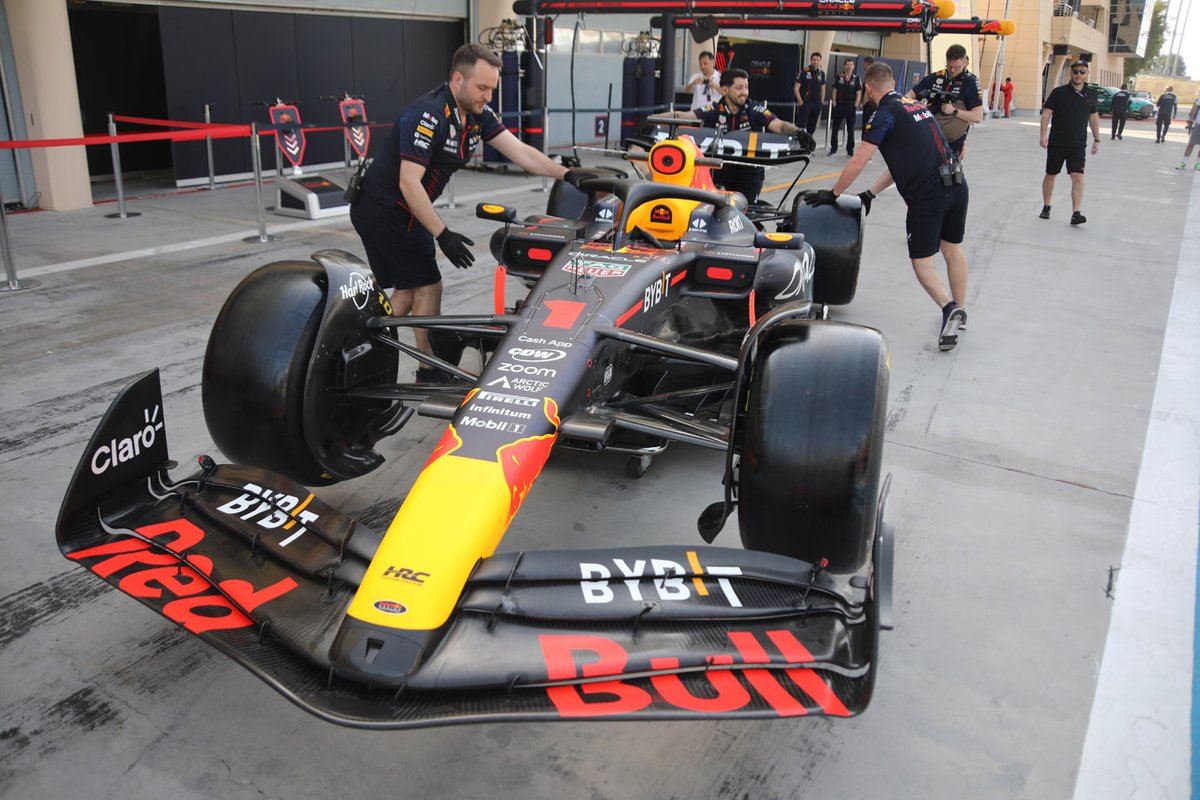
Red Bull Racing RB19
Photo by: Giorgio Piola
The Red Bull RB19 finally broke cover, giving us a wide array of details to examine. Notably, here we can see the width of the nose has increased at the tip, with a NACA duct (a low-drag air inlet) being used for cooling this season, rather than the oval-shaped inlet used last season.
You’ll also note that Red Bull has mounted a winglet on the inboard rear lower corner of the front wing endplate to help with the outwash effect.
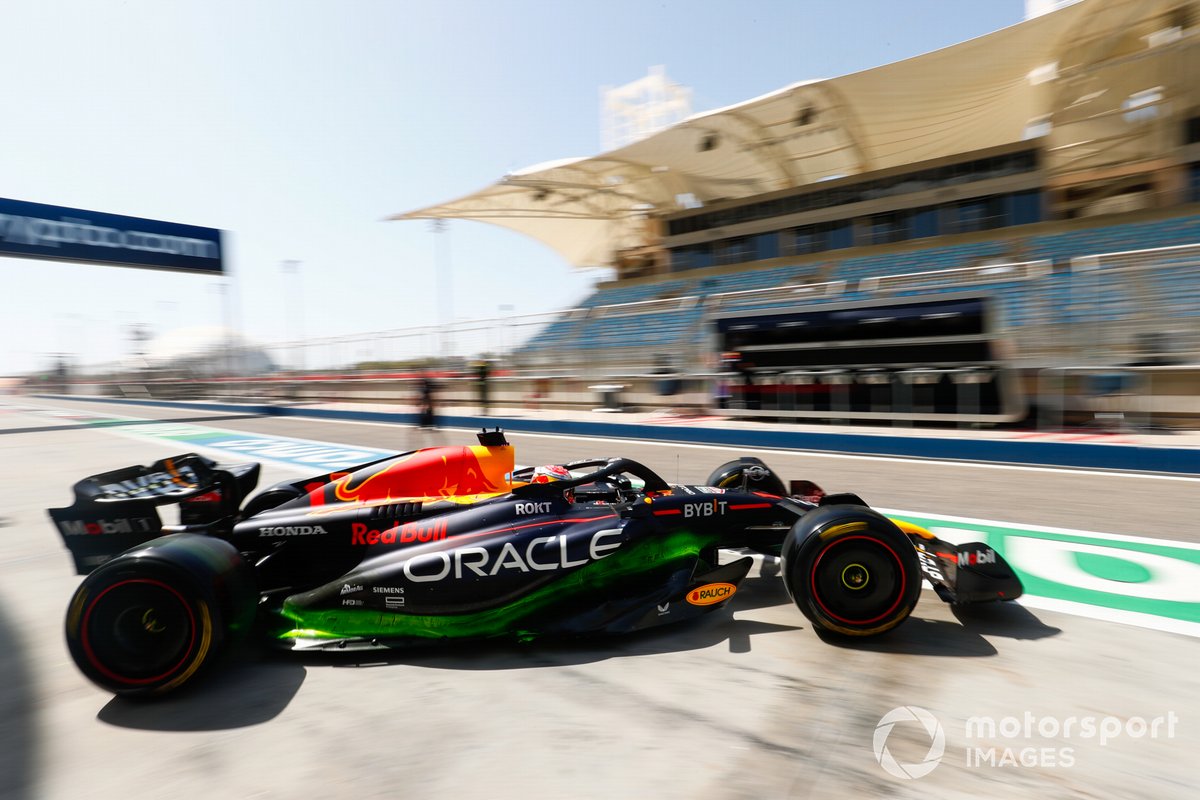
Max Verstappen, Red Bull Racing RB19, leaves the garage
Photo by: Sam Bloxham / Motorsport Images
Red Bull, like many of the other teams, painted flow-vis paint on its car during the first session of pre-season testing to evaluate whether the bodywork was achieving its aims, aerodynamically speaking.
In the first image we can see the car as it emerges from the garage with the paint having just been applied.
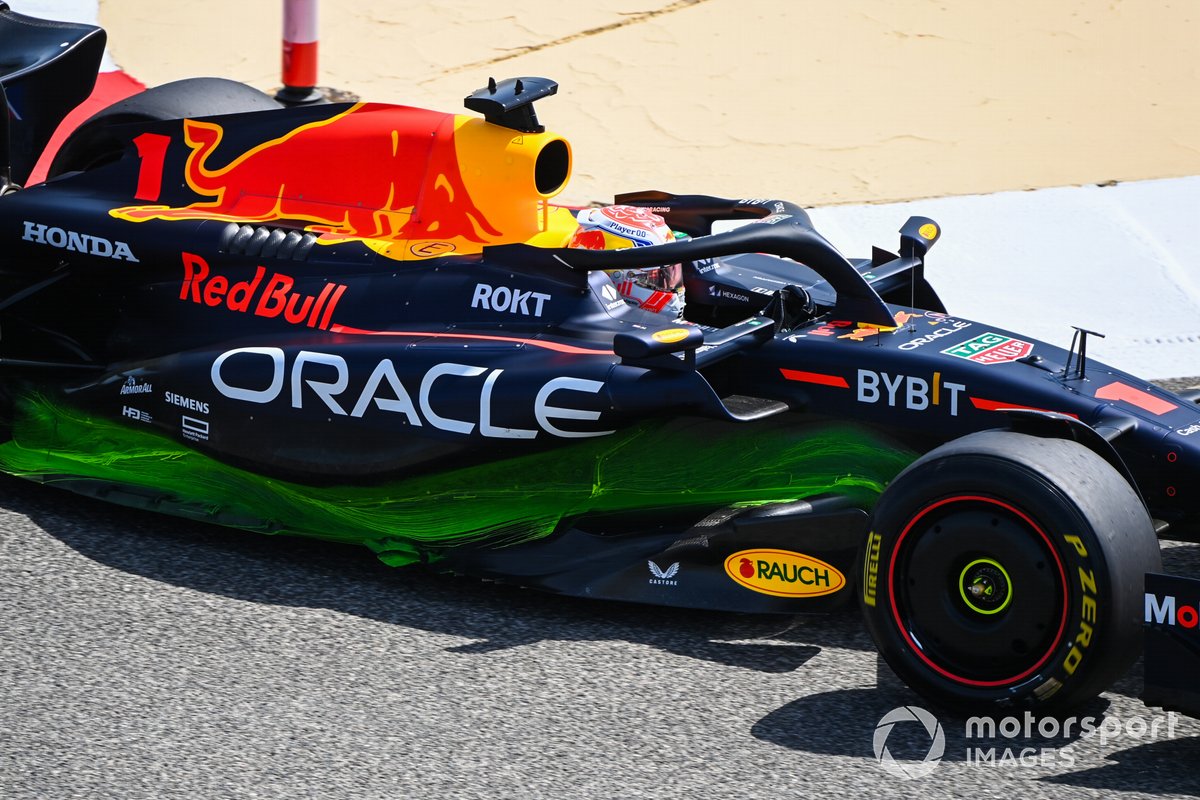
Max Verstappen, Red Bull Racing RB19
Photo by: Mark Sutton / Motorsport Images
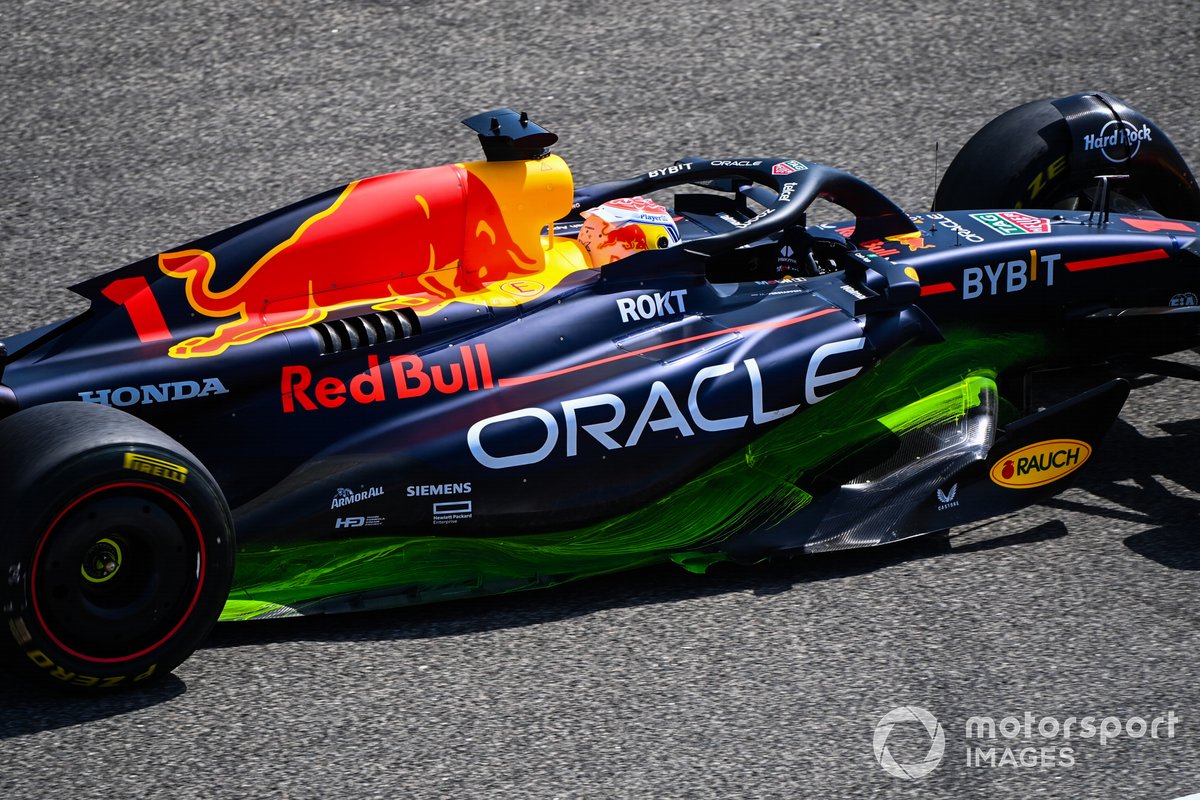
Max Verstappen, Red Bull Racing RB19
Photo by: Mark Sutton / Motorsport Images
Fast-forward to the shots of the car on track and we can see how the airflow has created a visual representation of the flow field in the oil-based paint.
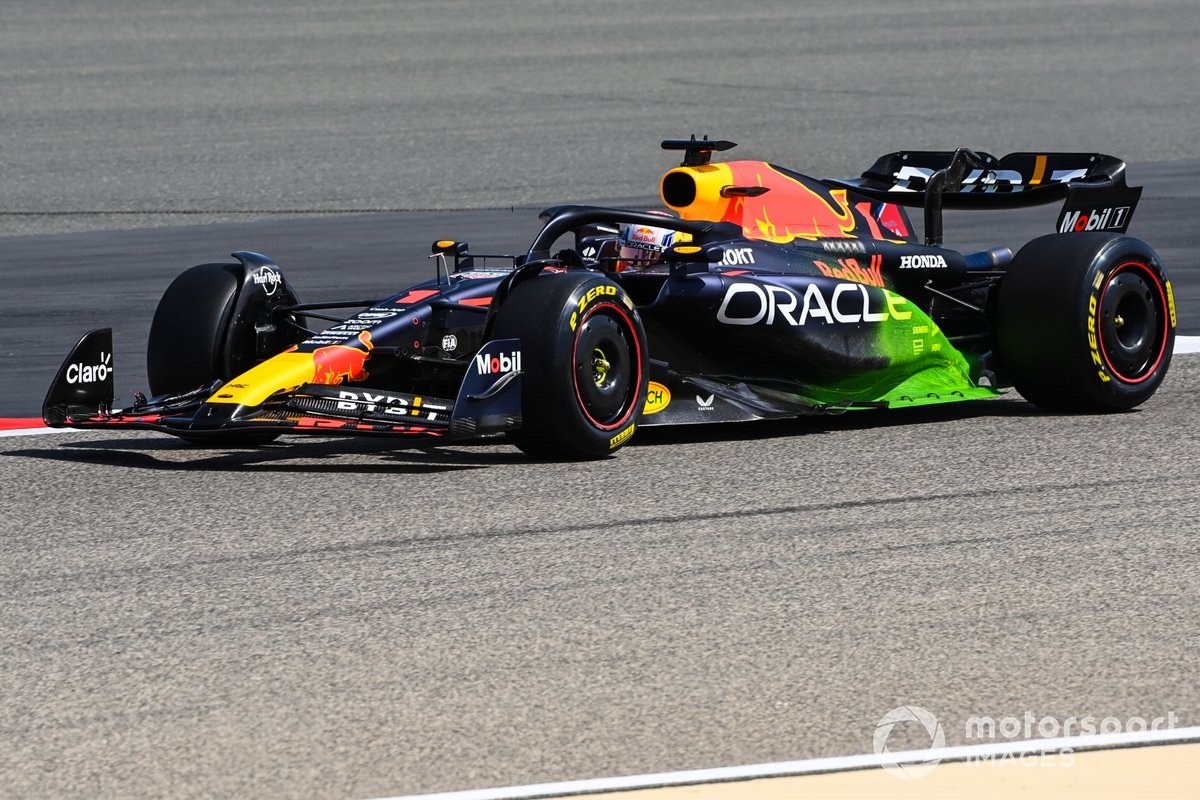
Max Verstappen, Red Bull Racing RB19
Photo by: Mark Sutton / Motorsport Images
Red Bull took a more focused approach to its flow-vis application on the rear three quarters of the sidepods downwash ramp, as once again it…
Click Here to Read the Full Original Article at Autosport.com – Formula 1 – Stories…

